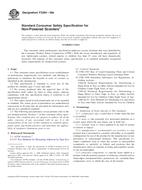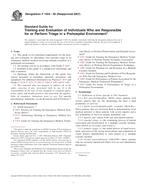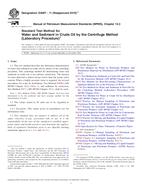1.1 These test methods cover procedures for the testing of cellulose acetate propionates and acetate butyrates. These esters may vary widely in composition and properties, so certain of the procedures can be used only in the ranges of composition where they are suitable.
1.2 The values stated in SI units are to be regarded as the standard. The values given in parentheses are for information only.
1.3 The test procedures appear in the following sections:
| Sections | |
| Acetyl Propionyl or Butyryl Contents | |
| Acetyl Content, Apparent | |
| Acidity, Free | |
| Ash | |
| Color and Haze | |
| Heat Stability | |
| Hydroxyl Content | |
| Hydroxyl Content, Primary | |
| Intrinsic Viscosity | |
| Moisture Content | – |
| Sulfur or Sulfate Content | |
| Viscosity | – |
| Limiting Viscosity Number |
1.4 This standard does not purport to address the safety concerns, if any, associated with its use. It is the responsibility of the user of this standard to establish appropriate safety and health practices and determine the applicability of regulatory limitations prior to use.
1.4 The test methods described in the following to cover the determination of the saponification value of the sample calculated as percentage of apparent acetyl, equivalent weight 43. This value is required in the calculation of acetyl and propionyl or butyryl contents in .
1.5 The test method used should be specified or agreed upon. The choice depends on the propionyl or butyryl content and the physical condition of the sample. Ordinarily, Test Method A is recommended for samples having less than about 35 % propionyl or butyryl and Test Method B for samples having more than that amount.
1.6 The test methods described in the following Sections to cover the determination of acetyl and propionyl or butyryl contents of cellulose mixed esters by calculation from the apparent acetyl content, determined in accordance with Sections to , and the molar ratio of acetyl and propionyl or butyryl, determined in accordance with Sections to . The molar ratio of acetyl and propionyl or butyryl is determined by saponifying, acidifying, vacuum distilling off the mixture of acids, and determining the distribution ratio of the acids between n-butyl acetate and water. The distribution ratios are also determined for acetic, propionic, and butyric acids, using samples of known high purity, and the molar ratio of the acids in the sample is calculated from these values.
1.7 The saponification conditions are varied depending on the propionyl or butyryl content of the sample. Use Procedure A (Section ) for samples containing less than about 35 % propionyl or butyryl, and use Procedure B (Section ) for samples containing more than that amount.
1.8 Analyses for combined acetic, propionic, and butyric acids may be done by gas chromatographic methods. Difficulties encountered include ghosting in the columns, variation of factors with composition, and inconsistencies in the use of pure acids as standards. When such methods are used for this purpose, they shall be cross checked with the following partition method using suitable check batches to establish accuracy.
1.9 This test method is applicable to pyridine-soluble cellulose esters and is especially useful when the hydroxyl content is low. (Samples containing plasticizer may be analyzed directly by this test method because the plasticizer is removed during washing of the carbanilate).
1.10 A preferred method is available in Test Method D 5897.
Product Details
- Published:
- 06/01/2004
- Number of Pages:
- 15
- File Size:
- 1 file , 150 KB


